Manila: Scores of commuters use the so-called "railway carts", propelled to their destinations by "trolley boys" who dance with death daily. The boys push metal carts that ply a few segments of creaky railways in Manila.
They testify to the crushing lack of public transport in the Philippine capital.
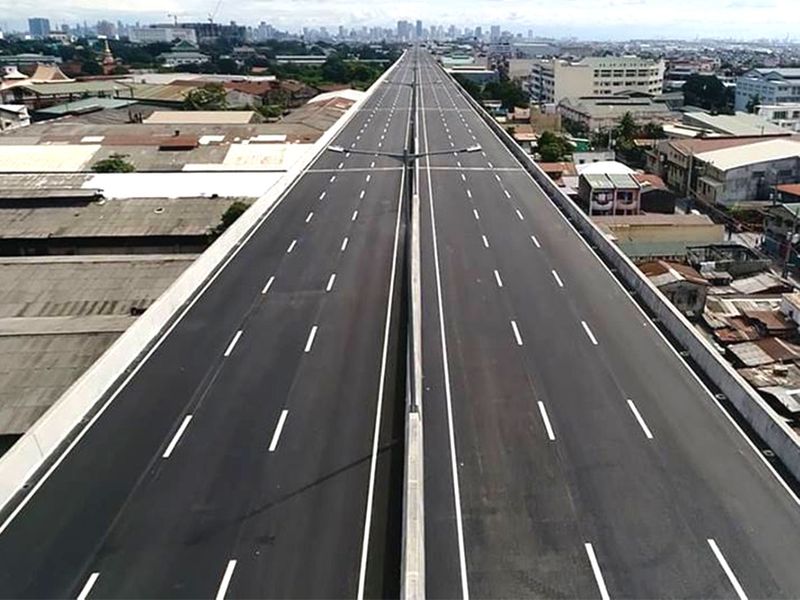
This huge metropolis of 17 million souls has only one airport — when one plane gets stalled on its sole runway, aviation mayhem occurs. Thousands of travellers and overseas Filipino workers pay the price, the whole country suffers.
President Rodrigo Duterte and his economic team seek to reverse this sorry state — and fast.
The result: a massive “Build-Build-Build” (BBB) programme, akin to a Keynesian push on a scale never seen before.
Alongside his relentless signature "war" against drugs, Duterte is pursuing war against "under-investment" — through an aggressive and “expansionary” fiscal policy.
Up to 9 trillion pesos ($171 billion, Dh632 billion) — about Php1.5 trillion per year — are being poured into infrastructure, until 2022.
That's at least three times the annual average infrastructure outlay by any previous administration. His economic team and even critics point to something almost surreal: A "golden age" of construction in Manila, and the Philippines as a whole. Some dubbed it "Dutertenomics".
The massive build-up includes some 75 flagship projects -- six airports, four seaports, and nine railway lines
75
number of flagship projects under Duterte, including six airports, four seaports, and nine railway linesDuterte's managers pushing BBB are also looking at building power generators, water resource projects and irrigation.
Many of these projects, like the Manila Skyway and MRT Line 7, are carry-overs from previous watches. Some are bankrolled by private capital under Public-Private Partnership (PPP), or Build-Operate-Transfer, agreements.
There's a difference today. Filipinos would do anything to fix the terrible lack of infrastructure that for years, due to right of way issues, dampened economic acvitity. And this has also frustrated Duterte. He promised to go after judges stalling projects by hearing cases lodged usually by losing bidders.
The result: the tempo is up not only to beat deadlines, but finish them ahead of completion dates.
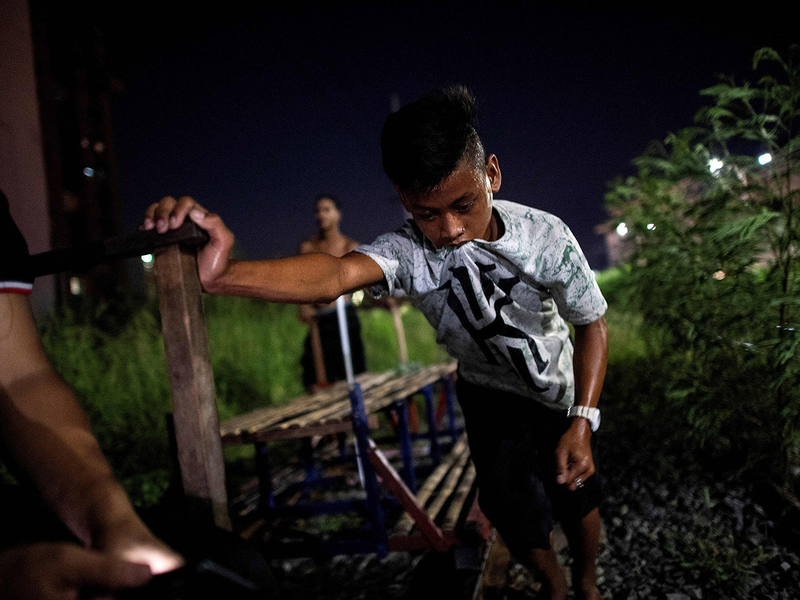
For example, the elevated 5.56km Harbour Link Segment 10 (No. 4 on our list, below), is set to open Tuesday, February 26, six months ahead of target completion date. The MRT Line 7 is also being rolled out in Q4 2019, ahead of the original 2020 schedule.
Together, the projects are expected to ease crippling traffic in Manila, a megacity uber hungry for infrastructure.
There are big-ticket projects. One is the Php227 billion ($4.5 billion) Manila Subway (Line 9).
It would be directly funded by Filipino taxpayers — through the Tax Reform for Acceleration and Inclusion (TRAIN) law. A project of this scale, and funded by taxpayers, was virtually unknown in the past. The reason: Previous administrations shied away from using public funds for mass transport systems.
Now, numerous infrastructure projects are in progress or are breaking ground, both with government and private-sector funding. The capital, choking in traffic and smog, will get the lion's share of these projects.
Rightly so. Manila has only one functioning airport, with just one proper runway.
Moreover, previous projects were crushed by right-of-way issues.
Duterte wants none of these. He had warned local judges against blithely issuing strings of 90-day temporary restraining orders (TROs) that hijack public infrastructure projects, usually after losing bidders question, and abuse, due process.
Citizens and visitors took the brunt of undue delays. By nature, these projects take time: Some like the 34.7km "Manila Skyway", go as far back as 1995, and is only seeing completion now.
Following are some of the key projects aimed to improve life in Manila and environs:
1. Skyway (also known as Metro Manila Skyway System)
Length: 34.7 km
Route: South Superhighway (Pasay) to North Superhighway (Balintawak)
Project Cost: Php100 billion (about Dh7.01 billion )
Funding: The project is being implemented by the Philippine National Construction Corp (PNCC) in a joint venture with Citra under build-operate-transfer (BOT) scheme arrangement.
Start date: 1995
Completion: 2020
Benefits: This is an elevated 6-lane elevated toll expressway will link the South and North Luzon Expressways from Alabang to Balintawak, cutting travel time to under 30 minutes, from the current 2 hours along EDSA.
Once completed, the Manila Skyway is the first fully grade-separated highway in the Philippines. It will be one of the longest flyovers in the world with a total length of 34.7 kilometres (when Stage 3 is completed).
The elevated expressway will connect to the North Luzon Expressway (NLEX) in Quezon City and help cut the travel time between Manila and Clark International Airport in Pampanga from 2 to 3 hours, including passage through traffic-clogged Manila roads, to just about an 1 hour. In effect, the Skyway will provide seamless access between the Ninoy Aquino International Airport and Clark via the new NAIA Expressway.
This three-stage project is set to be completed by 2020. Built directly over existing roads, this helps minimise right-of-way issues, which tend to stall government projects. An Electronic Toll Collection (ETC) system coupled with an Automatic Vehicle Identification (AIV) device for non-stop toll collection system has been installed.
2. The Metro Manila Subway Line 9
Project cost: Php227 billion (about $4.5 billion, or Dh16.1 billion as of 2017)
Funding: National government; to be included in the general appropriations in the following years
Route: Mindanao Avenue to Ninoy Aquino International Airport. Stations: Mindanao Avenue; Tandang Sora; North Avenue; Quezon Avenue; East Avenue; Anonas; Katipunan; Ortigas North; Ortigas, South; Kalayaan; BGC; Cayetano; FTI; Ninoy Aquino International Airport
Start: February 27 (ground-breaking)
Completion: 2025
Benefits: This underground rapid transit line to be built in Manila will be the third high-capacity heavy rail line in the country, after the Line 2, and Line 7 (Lines 1 and 3 are light rail transit systems). This is the most expensive transport project to be undertaken by the Duterte administration.
It’s the first rail line in the Philippines to be mostly underground, designed to run trains at the speed of 80 kilometers per hour. The tunnel diameter inside and outside is projected to be 5.2 meters and 5.65 meters, respectively.
Since there are estimates of an expected magnitude 7.2 earthquake (which can be as powerful as magnitude 7.6) in the Marikina Valley Fault System, the subway is designed to withstand a magnitude 8.0 earthquake.
The government of Japan has expressed willingness to help in covering the expenses of the subway, and the first part of a 104.5 billion yen loan was signed by Japan. Assessment of the environmental and geographical considerations in the base alignment (initially 74.6 kilometers long) recommends 18% of the line to be at-grade and 9% to be running through viaduct.
The rolling stock for this subway train, designed to run at about 50 km/h, consists of six cars, with a capacity of 412 passengers per car. Each rail car is projected to cost US$2.5 million (124.5 million pesos as of 2017).
3. Unified Grand Central Station
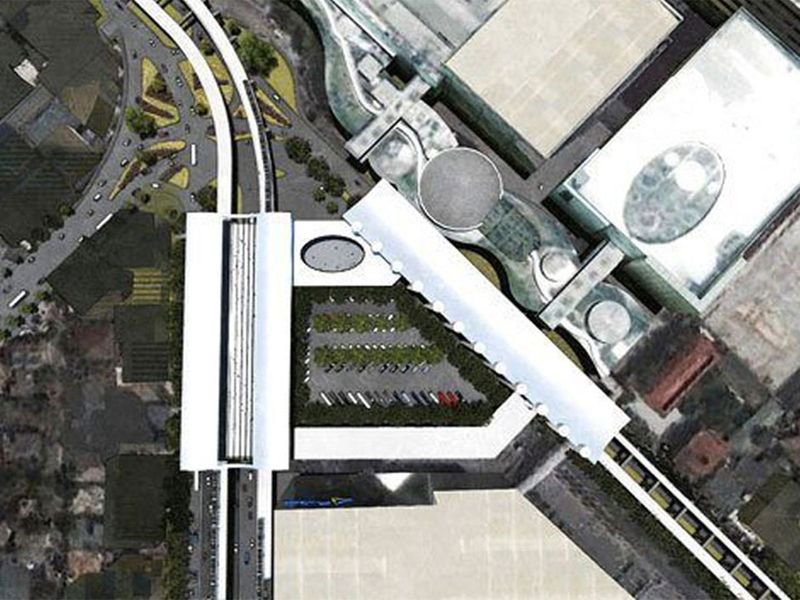
Project Cost: Php2.8 billion (about Dh198 million)
Funding: Public-Private Partnership (PPP)
Completion: Fourth Quarter of 2020
Benefits: This is a 13,700-square-meter common station connecting four railway lines for ease of passenger transfer and interconnectivity with road-based transport systems. It will serve as a transfer station for MRT3, LRT1, MRT7 and Metro Manila Subway.
The long-awaited common station is expected to be completed by October 2020 and fully operational by the end-2020. About 500,000 people is expected to pass by the common station by the opening year in 2020. Because of the inclusion of Metro Manila Subway, it can accommodate up to 1.2 million passengers in a day.
4. NLEX Harbor Link Segment 10
Project Cost: Php9 billion (about Dh637.2 million)
Funding: Public-Private Partnership (PPP)
Expected Completion: August 2019
Benefits: A priority project under the BBB program, the North Luzon Expressway (NLEX) Harbour Link Segment 10 will connect the MacArthur Highway in Valenzuela City to the C-3 Road in Caloocan City.
The six-lane, 5.65-km elevated expressway will benefit 30,000 to 50,000 motorists daily.
Construction of the NLEX Harbour Link Segment 10 up to C-3 was completed in 2018.
Meanwhile, the four-lane, 2.6-km section from C-3 to R-10 in Navotas City is expected to open by the Q4 of 2019.
5. NLEX-SLEX Connector Road
Project Cost: Php 23.302 billion (about Dh1.63 billion)
Funding: Public-Private Partnership (PPP)
Expected Completion: April 2021
This "Build Build Build" road project will connect the C-3/5th Avenue Interchange in Caloocan City (at the end of NLEX Harbour Link Segment 10) to PUP Sta. Mesa, Manila.
The four-lane, 8-km elevated expressway is built above the PNR rail tracks and expected to be used by over 35,000 vehicles daily.
Benefits of the NLEX-SLEX Connector Road:
- Shorter travel time between NLEX and SLEX from 2 hours to just 20 minutes
- Shorter travel time between Clark, Pampanga and Calamba, Laguna from 3 hours to just 1 hour and 40 minutes
- Reduced traffic congestion along EDSA, C-5, and other major Metro Manila roads by providing an alternative to these highways
6. NLEX Harbour Link Segment 8.2
This is a planned 8.35km four-lane thoroughfare connecting Segment 8.1 (the 2.7 km stretch from Smart Connect Interchange to Mindanao Avenue) and the Republic Avenue turning right to Luzon Avenue up to Commonwealth Avenue in Quezon City. Its completion depends on the road right-of-way (RROW) acquisitions, according to the government.
Length: 8.35km
Project Cost: Php7.45 billion (about Dh527.45 million)
Funding: Government (DPWH)
Starting Date: Q2 2020
Expected Completion: Q2 2022

Benefits: To be constructed in 2019, the 8.35-km, four-lane expressway will connect Segment 8.1 on Mindanao Avenue up to Commonwealth Avenue in Quezon City, cutting travel time from 45 minutes to just 10 minutes. This new road will complete the entire NLEX Harbour Link Project and benefit 45,000 motorists daily.
7. MRT Line 7
This is a 23-km elevated railway line with 14 stations from San Jose Del Monte, Bulacan to MRT 3 North Avenue in Quezon City. The PPP project also includes a 22-kilometer asphalt road from Bocaue Interchange of the North Luzon Expressway (NLEX) to the intermodal terminal in Tala, Tandang Sora, Quezon City (QC).
The road component will divert northern provincial buses operation to San Jose Del Monte, thereby decongesting EDSA, the main thoroughfare in Manila.

Length: 23 km (+ 22km asphalt road from Bocaue, Bulacan to Tala, QC multimodal terminal)
Stations: 14
Project cost: Php 62.7 billion (about Dh4.44 billion)
Funding: PPP, Build-Gradual Transfer-Operate and Maintain (BGTOM)
Private Proponent: SMC Mass Rail Transit 7, Inc (a Subsidiary of San Miguel Corp)
Date Started: April 2016
Completion: Q4 2019
Benefits: This is an urgently needed mass transit systam that will serve a wide swathe of north-eastern Manila, connecting the metropolis to Bulacan province. There are literally millions of residents and workers who will benefit along the way. It will serve government offices, universities, courts, malls and the Lower House of the Philippine Congress. The road component will divert northern provincial buses operation to San Jose Del Monte, thereby decongesting EDSA, the main thoroughfare in Manila.
8. Makati-Taguig Skytrain
Length: 2 km
Route: Bonifacio Global City (BGC) in Taguig to Guadalupe, Makati.
Project Cost: Php3 billion (about Dh212 million)
Funding: Infracorp. Development Inc. controlled by billionaire Andrew Tan
Starting date: 2019
Completion date: 2021
Benefits: Cut travel time between the Guadalupe MRT station to BGC to 5 minutes, from around 10-30 minutes by car depending on traffic. This short SkyTrain will link the Bonifacio Global City in Taguig to Makati's Guadalupe existing Metro Station (Line 3)
9. BGC-Ortigas Center Link

Project Cost: Php 1.6 billion (about Dh113.27 million)
Benefits: For those who work and live in BGC and Ortigas, a new road linking these two major business districts will make daily commutes a lot easier. The Bonifacio Global City-Ortigas Center Link, a Build Build Build project, consists of a four-lane bridge across the Pasig River connecting Sta. Monica St. in Pasig to Lawton Ave. in Makati and a four-lane viaduct traversing Lawton Ave. to the entrance of BGC.
Benefits of the BGC-Ortigas Center Link:
- Shorter travel time between Taguig and Pasig from 1 hour to just 12 minutes
- Reduced traffic congestion by 25% along Guadalupe Bridge at EDSA and Bagong Ilog Bridge at C-5
- Better accessibility between Taguig, Pasig, Makati, and Mandaluyong
10. Southeast Metro Manila Expressway (C6)
Expected Completion: 2020
Project Cost: Php45 billion (about Dh3.2 billion)
Benefits: Part of the larger C-6 Expressway project, the 34-km, six-lane Southeast Metro Manila Expressway will run from Skyway/FTI in Taguig City to Batasan Complex in Quezon City.
Benefits of the Southeast Metro Manila Expressway:
- Only 35 minutes of travel time between Bicutan and Batasan Complex
- Reduced traffic congestion along EDSA, C-5, Ortigas Ave., and Ortigas Extension
- Quick and direct access to major airport terminals
11. Cavite-Laguna Expressway
Project Cost: Php 35.682 billion (about Dh2.52 billion)
Funding: Public-Private Partnership (PPP)
Expected Completion: July 2020
The four-lane, 45.29-km Cavite-Laguna Expressway (CALA-X) will link the Manila-Cavite Expressway (CAVITEX) in Kawit, Cavite to the SLEX-Mamplasan Interchange in Biñan, Laguna. This Build Build Build project is seen to boost economic growth and investments in the Calabarzon region.
Benefits of the Cavite-Laguna Expressway:
- Shorter travel time between CAVITEX and SLEX from 1.5 hours to just 45 minutes
- Faster and safer commutes between Kawit and Bacoor in Cavite and SLEX and Laguna
- Reduced traffic congestion along Aguinaldo Highway, Governor's Drive, and Sta. Rosa-Tagaytay Road
12. SLEX Toll Road 4
Project Cost: Php 13.10 billion
Starting date: February 2019
Expected Completion: August 2021
Funding: PPP (San Miguel Corp)
Length: 58 km, four lanes
This new four-lane, 58-km road will connect Quezon province and SLEX (South Luzon Expressway), running from Sto. Tomas, Batangas to Tayabas/Lucena City, Quezon.
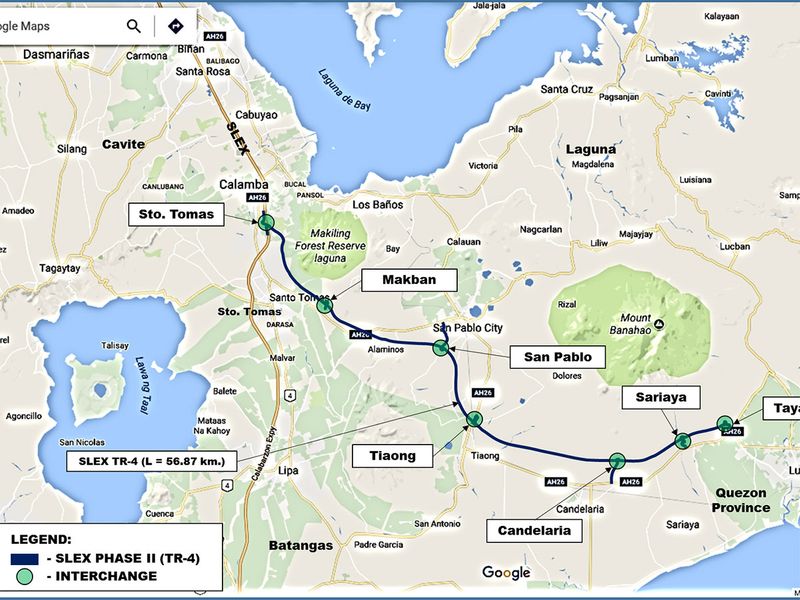
Benefits of the SLEX Toll Road 4:
- Cut travel time between Sto. Tomas, Batangas and Lucena City from 4 hours to just 1 hour
- Faster and safer travel from Manila to Southern Luzon
- Reduced traffic congestion on Daang Maharlika
- Safety and convenience through modern facilities such as security cameras and well-lit toll plazas
- Faster transport of goods and services between Metro Manila, Batangas, Laguna, Quezon, and Bicol
- Economic growth for Quezon and nearby provinces
Glossary of terms
What iS "Build-Build-Build"?
Duterte’s so-called BBB simply means this: The government — not the private sector — is taking the lead in developing public infrastructure and human capital.
It comes from a rather simple logic: Without good roads, ports and communications, the movements of goods and people won’t be efficient as they should.
The brains behind BBB
The brains behind this mega drive is Benjamin Diokno, 71, Duterte’s Secretary of Budget and Management. Dr. Diokno is one of the few men who can publicly disagree with Duterte, 73, on economic matters.
Diokno, who obtained his PhD from New York’s University of Syracuse, is a Professor Emiritus of Economics at the state-owned University of the Philippines.
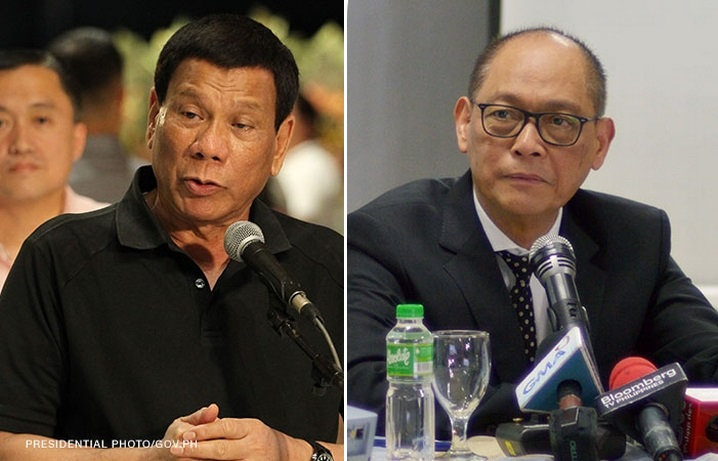
A known advocate of the Philippine budget reform law, Diokno helped re-organise the bureaucracy with the Government Rightsizing Act and pushed for transparency and automation of government procurements.
He has a long stint in public service: As Undersecretary for Budget Operations at the Department of Budget and Management, from 1986 to 1991, during the administration of President Corazon Aquino, then as Budget Secretary under President Joseph Estrada, from July 1998 until Estrada's ouster in January 2001.
His advocacies are laid down in his columns for BusinessWorld, a Manila business daily. Some Filipino lawmakers are pushing Duterte to sack Diokno over the latter's alleged links with contractors and for budget insertions that amount to "conflict of interest".
Every Filipino congressman gets about Php60 million lumpsum "discretionary fund", to be spent in his district. Each Senator gets about Php200 million.
In 2013 Supreme Court decision outlawed the Priority Development Assistance Fund (PDAF), more popularly known as the "pork barrel".
What is Keynesian economics?
Keynesian economics (also called Keynesianism) are the various macroeconomic theories about how, in the short run — and especially during recessions — economic output is strongly influenced by aggregate demand (or total demand in the economy).
Keynesian economics was developed during and after the Great Depression, from the ideas presented by John Maynard Keynes in his 1936 book, The General Theory of Employment, Interest and Money.
Keynes contrasted his approach to the aggregate supply-focused classical economics that preceded his book. There are various interpretations of Keynes, with several schools of economic thought claiming his legacy.
Keynesian economists generally argue that, as aggregate demand is volatile and unstable, a market economy will often experience inefficient macroeconomic outcomes in the form of economic recessions (when demand is low) and inflation (when demand is high).
These can be mitigated by economic policy responses by the state. In particular, monetary policy actions by the central bank and fiscal policy actions by the government, which can help stabilise output over the business cycle.
What is fiscal policy?
Fiscal policy is the use of government revenue collection (mainly taxes) and expenditure (spending) to influence the economy.
What is monetary policy?
Monetary policy is the process by which the monetary authority of a country, typically the central bank (Bangko Sentral ng Pilipinas) or currency board, controls either the cost of very short-term borrowing or the monetary base, often targeting an inflation rate or interest rateto ensure price stability and general trust in the currency.[1][2][3]
What is monetary base?
The portion of a reserves of commercial banks within a given country that consist of the following: (1) commercial bank's accounts with its central bank, plus (2) the total currency circulating in the public, plus (3) the currency, also known as vault cash, that is physically held in the bank's vault.
What makes Keynesian economics relevant to the Philippines?
Keynesian economists generally advocate a "managed" market economy. In Diokno's writings, he has clearly attacked the propensity of previous governments to "under-invest" in badly-needed infrastructure.
It's a change of thinking: Past leaders were biased towards giving private entities the burden of funding and taking the lead in building things. The result: The Philippines is eating the dust of its more well-off neighbours.
Duterte and Diokno are almost single-mindedly pushing for "government intervention" in solving Manila's, and the country's, sclerotic infrastructure. Duterte had recently threatened to veto the budget insertions, called "pork barrel", which become campaign funds for lawmakers.
In turn, some Congressmen want Diokno's head.
Outside the political circus, the key question now is: Would the Filipino taxpayers get their money's worth from these mega-projects? Would this era indeed prove to be a "golden age"?
Sustained growth?
With the economy growing at a faster clip (6.9% in the September 2017 quarter) and 6% at the end of 2018, could the Philippines sustain this growth over the next decade without triggering inflation from all the spending?
Duterte’s predecessor, Benigno Aquino III, left an economy that grew an average of 6.1% from 2011 to 2016. Aquino’s managers pushed PPPs and “bottom-up budgeting” to the hilt — but faced a huge underspending problem.
One study sliced the numbers from 2011 to 2015, showing that Aquino’s term spent about 10% less than planned: for every 100 pesos earmarked for a project, only 90 pesos was spent.
The reason: Certain government branches were given so much cash they didn’t know how to spend, lacked “absorptive capacity”, technical and managerial staff, or inter-agency coordination.
Dr Diokno termed this an “epic incompetence.”
Dozens of big-ticket PPP projects were signed under Aquino, many of them are being completed now, but at least five such projects that were were shelved — or failed.
The Philippines economy continues to ride high. Duterte's watch will be judged according to the same measure they used against predecessors.
There are pressing challenges: Inflation (rise in price of basic goods), nepotism (close friends reportedly undeservedly getting big government contracts), competence of government bodies in spending public funds, striking a balance between underspending and overspending.
While spending rate improved, “underspending” remained — at 3% under Duterte in 2017, by Diokno’s own admission. From January to October 2018, government spending reached Php2.8 trillion, 25 percent higher than the Php2.24 trillion same period in 2017.
Corruption is another story
Nearly three years into his term, the extremely popular Duterte, promises "no mercy" for the corrupt. His term ends in 2022.
The upcoming mid-term elections in May would be a vote of confidence for Duterte, if the people would elect all, if not most, his candidates.
There are early signs, however, that at least one of his closest allies is getting billions in government contracts, even if undeserved.
Curbing corruption would be a tall order indeed in a country trying to find its feet to reverse the culture of kickbacks — and projects that prove to be lemons.
So far, no one has gone to jail for substandard public projects.
The Duterte era does offer a rare potential to change the "railway carts" scene in Manila, and plot a new course for the country as a whole. Or, without a real change of culture in managing taxpayers' money, it could simply leave behind more of the same.








